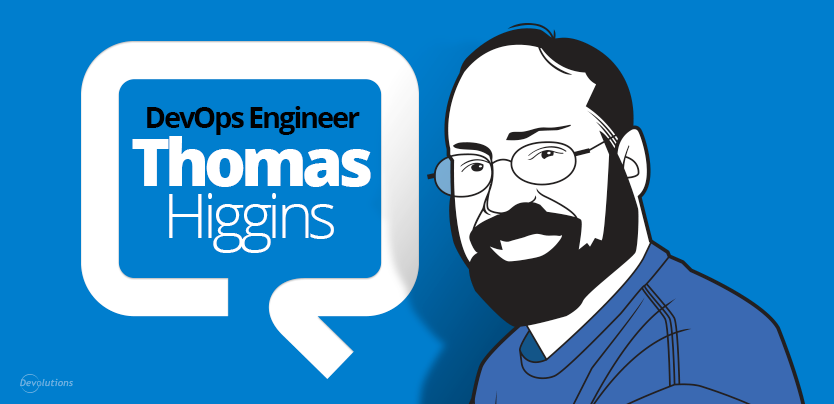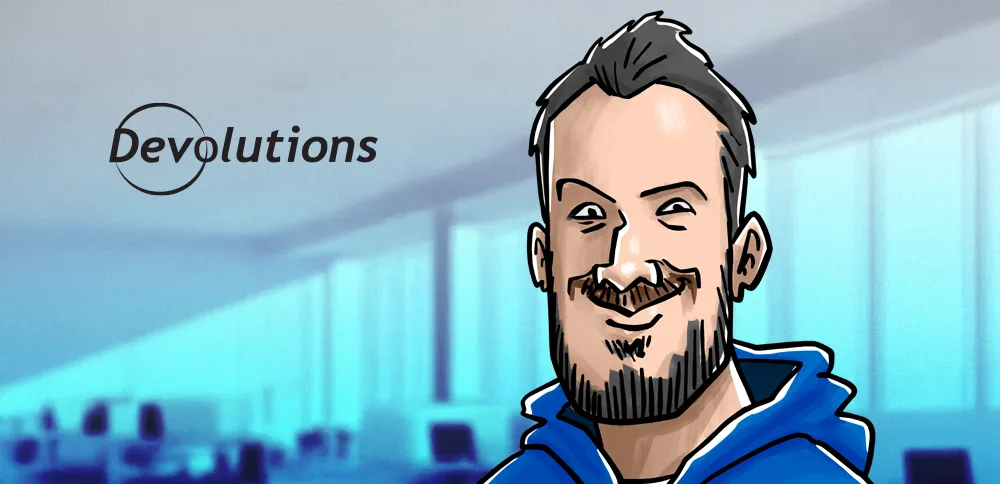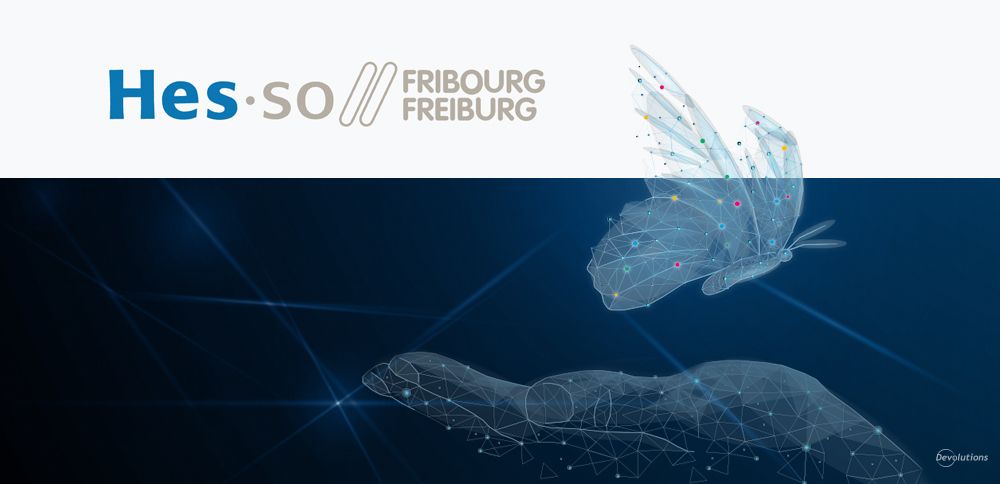“Extensive built-in security that supports easy-to-implement best practices is why I believe RDM is the best solution for organizational use.”
Some of you may recognize Thomas as one of the more active community members here on the Devolutions blog. We’re always happy when he can take time from his busy schedule to share his comments, opinions and insights.
Recently, we had the opportunity to connect with him and explore how he’s using Remote Desktop Manager to tame the IT chaos in his world. Here’s a recap of our discussion:
Please share a little about your industry, offerings, machines and tools.
Our main focus is on B2B web-based application development for the medical industry. I’m part of a team of 4 IT pros who manage around 500 machines with Remote Desktop Manager, which we’ve been using for about 3 years. If I include many of the legacy systems in our environment that I haven’t yet needed to log into, the number of machines jumps to around 650.
In addition to Remote Desktop Manager, I use RDP and SSH. The protocols and tools that I use with Remote Desktop Manager include http/https, VMware client, RVTool plugin, and the SQL Server Management Studio plugin. In the past, I’ve also used HyperV Client, AWS Console, Cisco ASDM and the Spiceworks plugin. I’m still looking to setup for VPN, but haven’t done so yet because right now the need is low.
Can you share some of the challenges and frustrations you experienced prior to using Remote Desktop Manager?
My biggest frustration was having to use various tools to do the same things on different machines. It was frustrating to set up Putty for Linux boxes, RDP sessions for Windows boxes, VMware to get VM details, and so on. Another challenge that I frequently ran into was trying to** maintain so many different passwords**. Some were in spreadsheets, some were in software solutions – first TeamPass, and then later Thycotic – and some were just in my head, although these were mostly for my own websites. To maintain my sanity,** many of these memorized passwords didn’t use strong password best practices,** because I wouldn’t have been able to remember them. The final straw, though, was when business boomed and in about two years, our server count jumped from around 100 machines to over 400. It was too much to track, in too many different places.
Did you try addressing these problems with tools other than Remote Desktop Manager? If so, what was that experience like?
For Linux Machines, I used Putty. That was a no-brainer. It was standard, worked well, and everyone knew the ins and outs, so if you had an issue, it was resolved quickly and easily. But RDP solutions were much more fractured. I tried Terminals, mRemoteNG, RDCMan, and several others. Most worked OK, but they all only worked for RDP Sessions. I settled on RDCMan, mostly because my co-workers used it, but it still had issues. Aside from those, I used VMware Console for managing VMs, and Roboform as a website password manager.
Having four tools that did mostly the same thing was annoying. And in many cases, while the functionality overlapped, I didn’t get the complete solution that I needed. What I really wanted was a single tool that would securely store connection information for RDP and SSH, and include password management so I didn’t have to go looking it up every time. Ideally, it would also take care of websites, but I thought that was asking for too much!
How did you learn about Remote Desktop Manager?
I had been looking for a solution for some time, and when I heard about Remote Desktop Manager at the VMware User Group, I had to see what it offered.
Now that you have been using Remote Desktop Manager for quite some time, what 3 features do you find the most useful and why?
Before answering, I should point out that the key must-have features for me for any solution were and remain multiprotocol support and password management. These are not just features that I want, they are deal-breakers for me. Remote Desktop Manager more than meets these requirements.
And so with that being said, the first feature that I love about RDM is building on multiprotocol support. RDM takes the idea a step further and becomes the user interface for not just different connections and connection protocols, but for entire applications.
The second feature I love is the flexibility. I was just looking for something that could maintain connections and passwords, and allow me to update them. But once again, RDM went above and beyond by offering multiple options, including shared databases, local databases, third party password stores – such as KeePass and Thycotic to name a few that I’ve used – Dropbox, Amazon S3. And of course Devolutions’ own optimized solution, Devolutions Server, in both the on-premises and cloud-based applications.
The third feature that I love is all of RDM’s plugins and extras. On the one hand, being completely extensible through Plugins means that even if there isn’t something to manage a tool, there may be a solution someone else has made, or I can try creating my own solution. On the other hand, many useful extras such as the password generator, Powershell scripting support, import and export connections to a variety of formats, and so on, are all super useful and point back to the completeness of the solution.
What problems has Remote Desktop Manager helped you solve that your fellow IT pros might be able to relate to?
It all goes back to the features that we love. The reason we love them is they deal with specific problems that were addressed by RDM in a better way than the alternatives. Specifically for me, it was aggregating connection and password management in a single extensible tool that has extensive support for many popular third-party tools and interfaces.
Have you experienced any big wins because of Remote Desktop Manager?
One of the biggest wins that I’ve experienced personally is that I can maintain password best practices – such as using a separate password for each server and site – while maintaining connectivity to over 500 different devices without spreadsheets (or unnecessary lookups), copying and pasting, and whatever keystrokes are required by alternative tools. As a result, I’m more productive and can do more in less time.
Another big win occurred when I got our development team to use RDM for connecting to an AWS project we had. I was able to export the connections without my credentials, which the development team imported and used to connect to roughly 130 new devices, but without each person taking the time to setup all their connections. A project that would otherwise have taken about 14 man-hours dropped down to 2 man-hours. Yeah, I’ll count that as a big win!
What would you say is the single biggest reason you would recommend Remote Desktop Manager?
In a word: security. I have mentioned many things that I love about RDM, along with things I find helpful and that makes usage easier. However, the real value is all that help and all that ease-of-use makes you more secure, while having all those other things, too. Security without effort would be a motto that I think RDM could use far more than most, if not all, other software.
For example, features like** shared connectivity without revealing a password** is almost a dream for security personnel. Educating users on best practices is no longer a test of wills, but rather an explanation of what the best practice is and how to implement it. When password best practices are just as easy to use as worst practices, security teams can rejoice!
And shared privileged passwords no longer keep security experts up at night, because administrators no longer need to know the password to gain access to the system. They can even paste the password without seeing the actual entry in most cases, or if they know it and want to change it, they can do that as easily as pressing three buttons. And so, extensive built-in security that supports easy-to-implement best practices is why I believe RDM is the best solution for organizational use.




